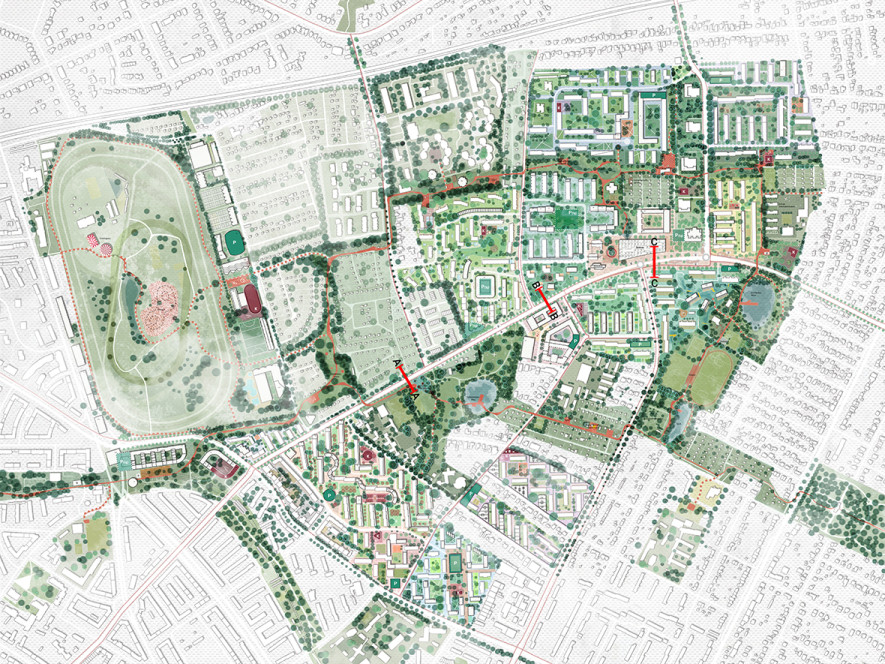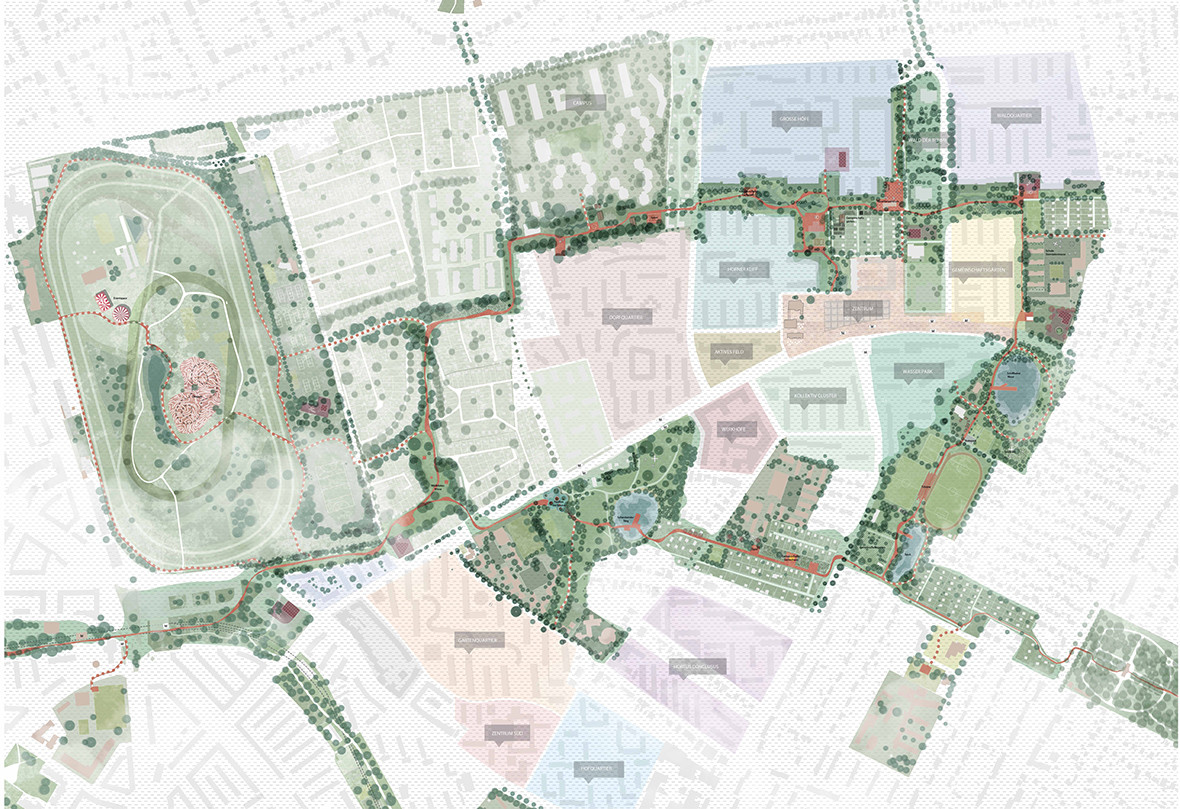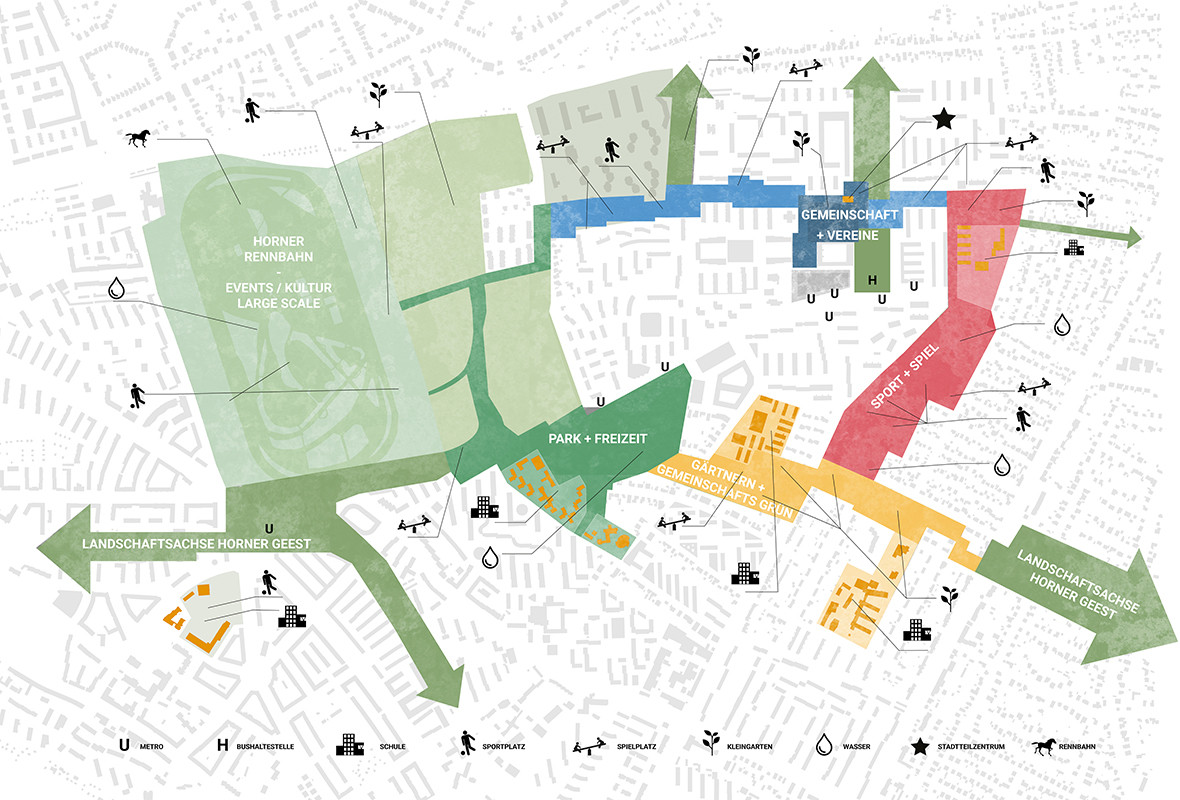


In the middle of Hamburg in the Horner Geest district, the U4 subway will be expanded by two stops. The new section of the U4 line will offer around 13,000 people an underground stop in close proximity to their homes. The public infrastructure with schools and district centers and open spaces is above average in Horner Geest, meaning that district can accommodate additional residents and their homes. This provides an opportunity for sustainable densification with the goal of a dense, vibrant and even greener neighborhood.
Although Horner Geest was built in a short period of time, it is not a uniform area. The quarter consists of 19 different residential clusters within a frame of single-family houses. The clusters vary in housing typologies and their relationship to public space, but the general feeling is that it is monotonous and repetitive. As a basis for the design, the clusters were catalogued with characteristic names. From, here different settlement clusters can be recognized and developed from monotype zones into characterful and diverse neighborhoods. All the clusters are studied, reinterpreted and connected by a network of specific open spaces. The mono-functional, non-layered, same-formal types of clusters become multi-functional, layered, spatial, formal clusters.

The qualities of life in the Horner Geest will be strengthened by identifying minimally different settlement clusters in the existing stock and develop them into neighborhoods full of character. The process of densifying by adding new building typologies to the existing buildings, creates diversity. Therefore, a livelier part of the city is created: diverse buildings additions and open spaces, clear hierarchies and spatial sequences, identities and neighborhoods are all connected by a Green Loop of vegetation and public features. The result is that the green private courtyards are close to the kindergartens, next to new mobility hubs, next to new residential buildings, next to communal gardens and so on. The clusters are a safe world of immediate, easy to reach and well connected.
The Green Loop is a pedestrian and bike loop that establishes a new hierarchy and connects all 19 clusters with each other and the public open spaces. The solid base is formed by the already largely existing green circle structure that frames the quarters. Priority is given here to pedestrians, cyclists, children, the elderly and also to the existing fauna and rich vegetation. To avoid monotony, the green loop will have different zones with programs (sports, games, water...etc.) depending on the identity of the related clusters facing it.


| Location. | Hamburg, Germany |
|---|---|
| Assignment | Urban renewal plan and design public spaces |
| Size | 330ha |
| Design | 2019-2021 |
| Status | Study finished |
| Client | Municipality of Hamburg |
| In collaboration with | Coido, BeL |